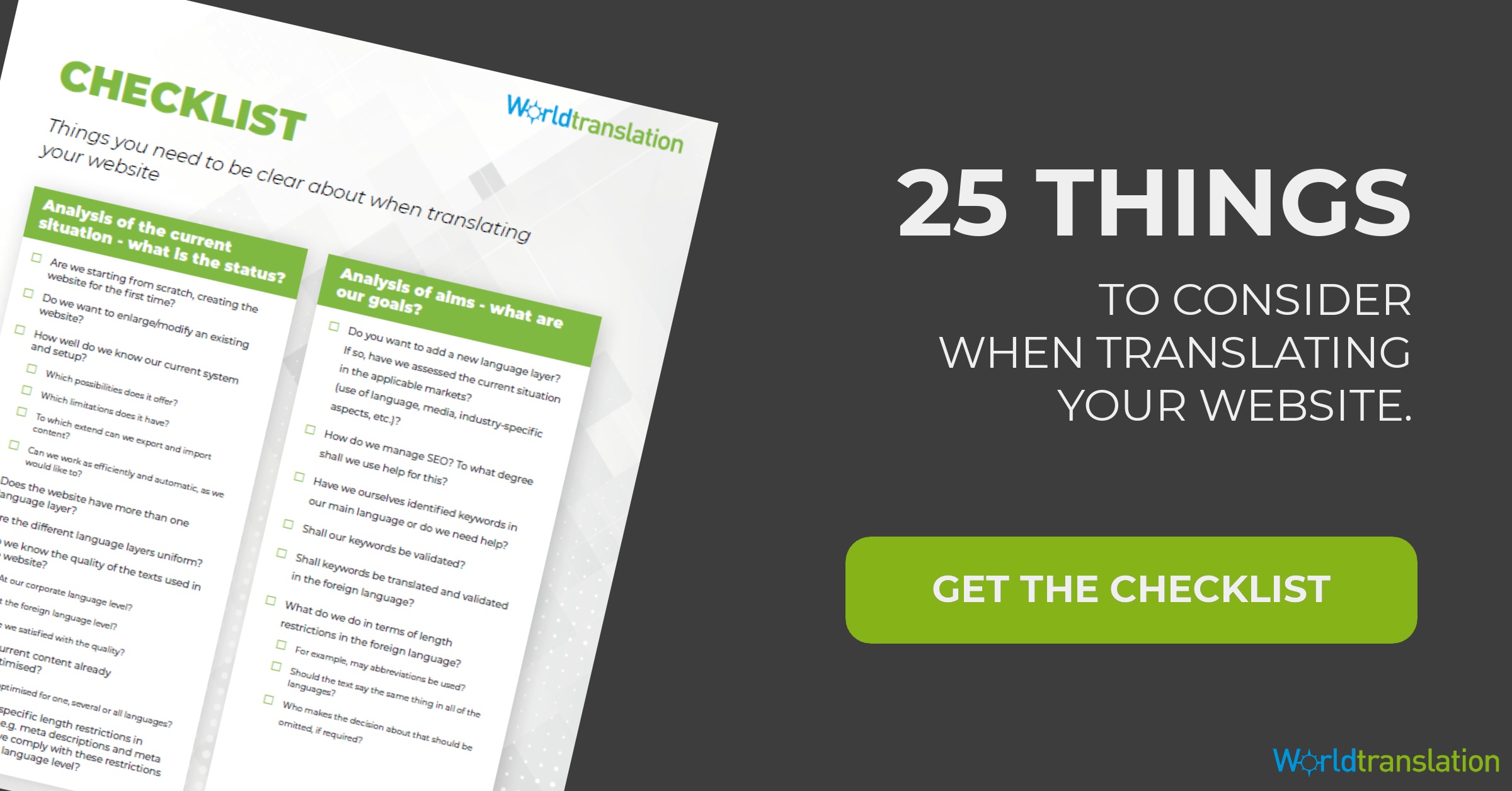language but what about your website’s other language layers?
Working with SEO in a foreign language (also called International SEO) can be challenging, and it takes time before you can actually see any results from your hard work. However, it is worth the effort because in the end, the work can be very beneficial. It can improve your chances of
generating more visitors to your website and thus generate more potential leads. Therefore, I have selected five areas that you need to pay special attention to when working with SEO on multiple language layers.
Localisation – adapt your content
Consider your reasoning
Whether it is title tags, AdWords advertisements or content for your website, you must
remember to target the country and language in question (this is known as localisation). It is not certain that the line of reasoning you emphasised in your Danish texts, functions nearly as well in other countries. It may be that the target group in the countries in question search differently or react better to other lines of reasoning. This means you need to become familiar with your target group and find out which lines of reasoning work in the country in question.
Practical adjustments
Some practical adjustments may need to be made. Remember to change the small details, such as changing the currency code, and be aware that perhaps other rules apply to the country in question. It could also be a good idea to find out which search engines are the most used in the country in question. In Denmark, Google is the clear favourite, but in the USA, people also use Bing.
A language is not just a language – optimise on the basis of the country,
not the language
Purely in terms of style, there may be cultural, semantic and language differences as to how the individual language is used in different countries. This will also affect the keywords that the
target groups use, and the way that they use the search engines. If you are targeting the USA, it is important that you use American terms and not British terms.
Adjust your domains for each
language layer
Search engines seem to favour local domain names. If instead, you have language versions on the same domain, like here: https://worldtranslation.com/lang=se (Swedish language layer), there is a large chance that your website will be given a low priority in the Swedish search results because the .dk domain informs the search engines that the website is Danish.
The desired domains are not always available in the country in question. This means that you may be forced to compromise with the domain name. If you have been forced to find another domain name, remember to make it as simple and precise as possible. You could consider
including a relevant keyword, which can help to indicate to the readers, what they can find on your website. For example, it could be: www.worldtranslation-translationagency.com, if
www.worldtranslation.com was taken.
Validation of keywords
It is not a good idea to just translate your keywords into another language. I know just how tempting that is though! Search to validate your keywords in the different languages, so that you are sure that your content is targeted at your target group. It will be a missed opportunity, if you created some excellent content and then focused on keywords that no one uses.
The length of your text – the length will change when translated in to other languages!
The first thing you need to be aware of is that the length of a sentence will change when it is translated. Not only can this create problems with layout and graphics, it can also be a problem when there is a length restriction with the text.
Therefore, when you translate your title tags, meta descriptions and AdWords advertisements, you must be aware that the sentences will very likely need to be slightly re-written.
An example: Our title tag in English and German has the same meaning, but our German tag is nine characters longer compared to the English.
TIP: Want to avoid problems with the layout and graphics?
Let our DTP team help!
Linkbuilding
Regardless of what language your website is written in, link building is an important part of your SEO. It might appear slightly unmanageable having to decide how to work with link building on a language layer, when you perhaps have limited or no knowledge of the language and country.
Consider who you are linking to in your own country, what relevant network and partners you have? Perhaps there are similar networks in other countries, which you can work with.
There is almost certainly a network of relevant subject-related blogs, where you can contribute expert knowledge.
Do you want help to be among the first search results of a search engine in all of your language layers?
We can help you to translate your content in all of your language layers, and validate and
implement the correct keywords. In addition, our translators are trained in International SEO, and therefore, not only do they have extensive knowledge within the field, they are also used to working with length restrictions and in implementing the correct keywords in the right places. Not only do we translate content, we also translate your title tags, meta descriptions and
AdWords advertisements.




